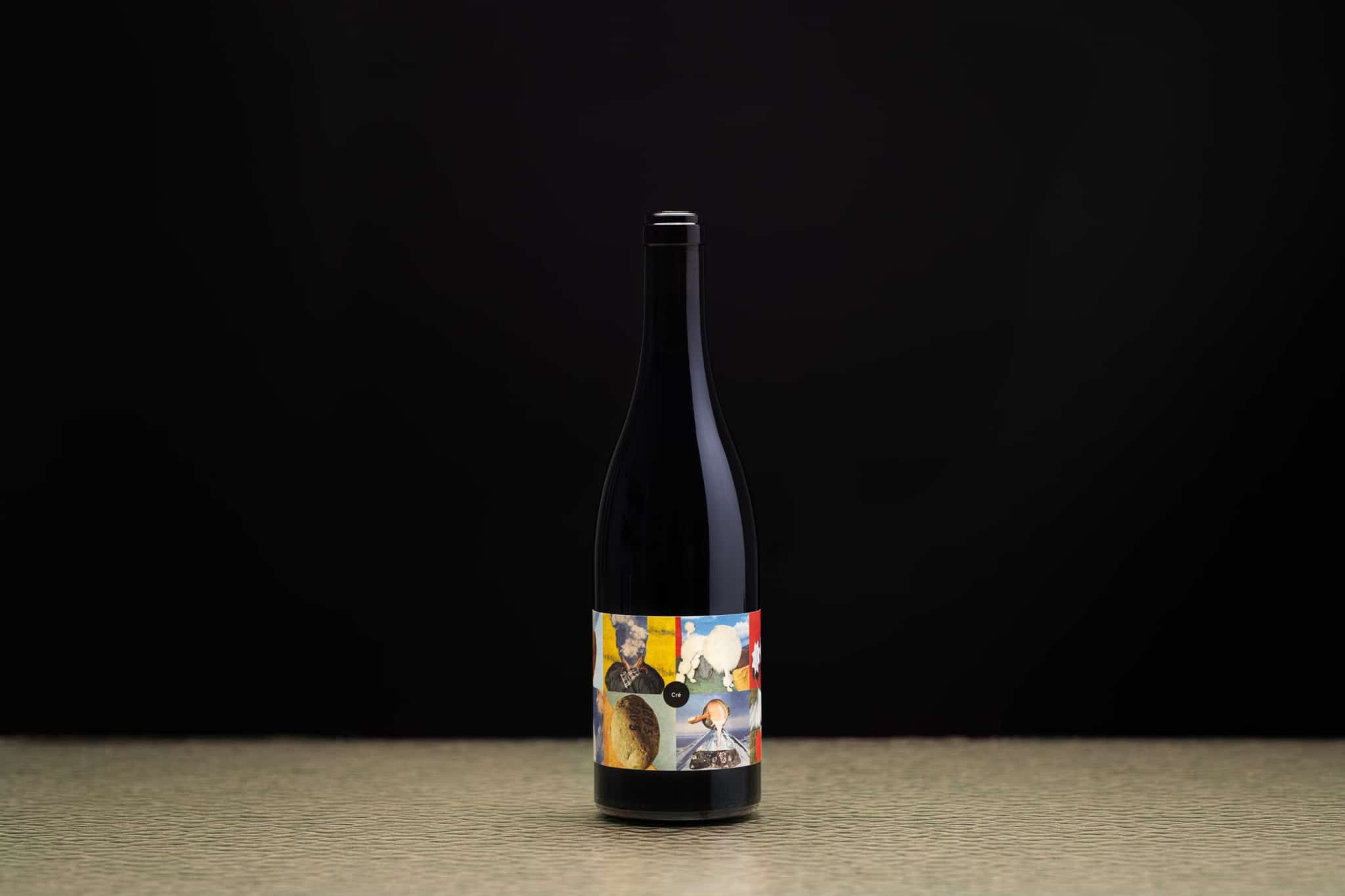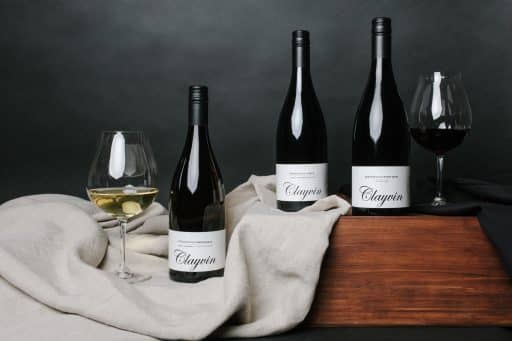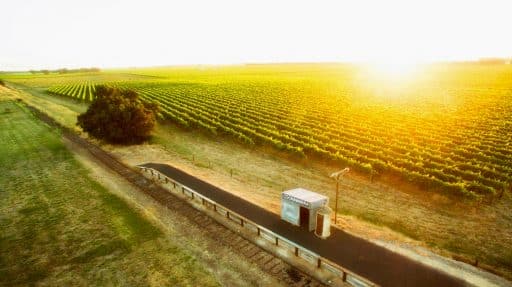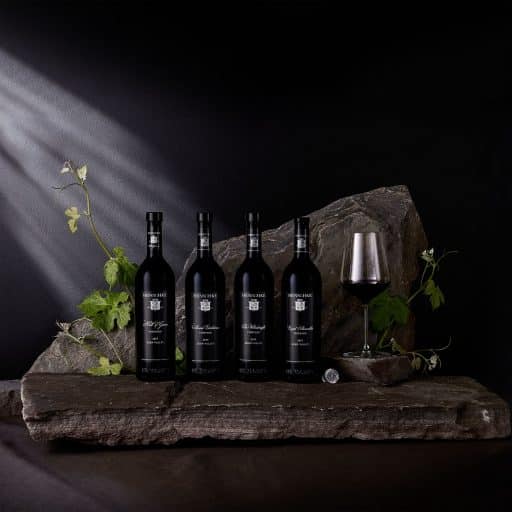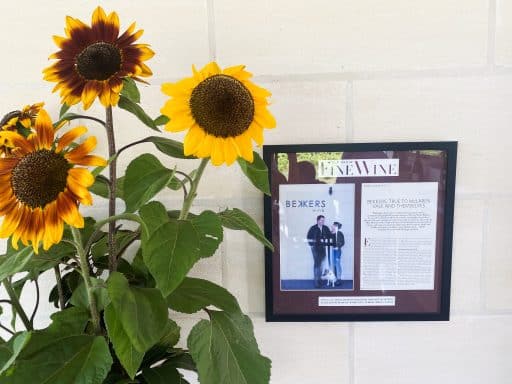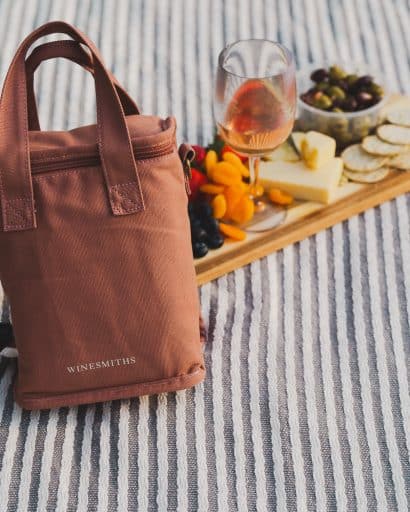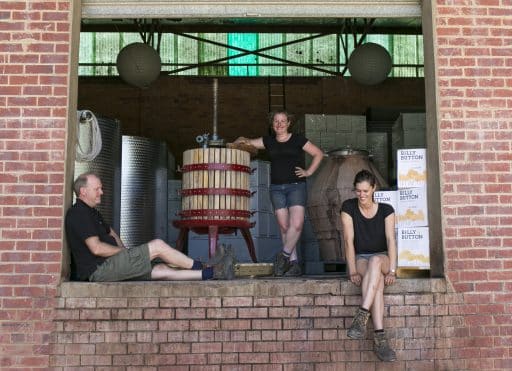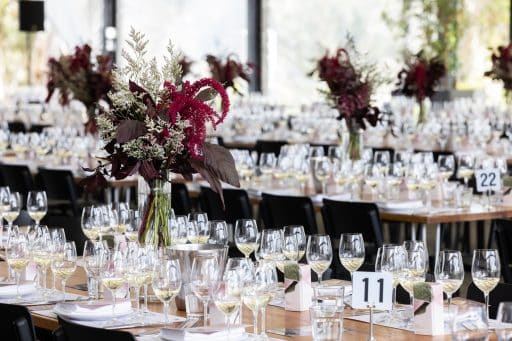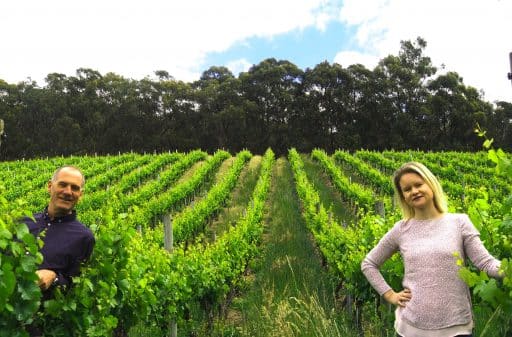Over the past few years, I’ve noticed the increased use in Australia of a certain winemaking technique known as carbonic maceration. This technical-sounding name involves an ingenious process that exploits the fruity characteristics of grapes, resulting in fresh, light, and (often) extremely delightful wines. If you’re a fan of wines from the Beaujolais area to the south of France’s Burgundy region, you’re likely familiar with the result of this process, if not the name.
Carbonic maceration occurs when whole bunches of grapes (in the case of Beaujolais, the gamay grape) are placed in a vat or bin and covered tightly, with the addition of dry ice to envelop the grapes in carbon dioxide and starve them of oxygen. In this anaerobic environment, the grapes undergo what’s known as intracellular fermentation: the sugars inside the grape are converted to alcohol, but without the influence of yeast, which is generally present on the outside of grapes.
Usually, because of the weight of the grapes, some at the bottom of the vat will be crushed and will start fermenting normally, due to yeast on the skins coming into contact with the juice. When the ABV reaches around 2% inside the uncrushed berries, they burst, spilling out liquid, some tannin, and aromatic compounds, which all collect at the bottom of the vat. The wine will then continue to ferment in the traditional manner (with yeast) and can then be either pressed off the skins quickly, or left to soak for a deeper colour and flavour extraction.
What does all this mean for the resulting wine? Carbonic maceration creates brightly coloured wines that have low tannin and are very fruity and approachable, often with aromas and flavours such as banana, kirsch, strawberry and/or bubble-gum. Beaujolais nouveau is perhaps the most famous example using carbonic maceration, which is always released in France on the third Thursday of November. It is purposefully made to be consumed early, and is just one of any number of great excuses for the French to party. I also have it on good authority from several French friends that of all the hangovers experienced in France in the latter part of November, Beaujolais nouveau is responsible for about 98% of them.
I thus gave myself the task of finding as many Australian wines as possible that used carbonic maceration (hereafter referred to by the Aussie term “cab mac”; yes, I know it should be “carb mac”) at least to some degree during the fermentation, in order to see not only how winemakers here are doing things similarly to the French, but also how they’re putting their own spin on the process to create different and interesting wines.
I also wanted to see the result of using cab mac with grapes other than gamay, such as pinot noir, shiraz/syrah, grenache, and in blends. Here are the seven Australian wines I discovered, plus two Beaujolais nouveau I used as my “control group” (pretty much the only two I could find easily in Melbourne after COVID-19).
Domaine Anita 2020 Beaujolais-Villages ‘Les Coteaux de Malval’ (Gamay) – Beaujolais, France ($30)
Domaine Anita is based in the Beaujolais cru (a group of vineyards of superior quality) known as Chénas, and in addition to Beaujolais nouveau and Chénas, they also make wines from Morgon, Moulin-à-Vent, and Fleurie. I couldn’t find much information online regarding the Anita, except that the soil has lots of blue stone and clay, the average age of the vines is 37 years, and the vineyard sits at 398 metres.
The Anita has a beautiful and deep purple colour and really punches you in the face with its fruit (blueberry, strawberry and raspberry) and cab mac qualities, such as bubble-gum, banana and cinnamon, which round out this young, vivacious and delicious wine. As it’s a villages-level wine, the quality sits between the generic Beaujolais designation and the crus, but in some respects this is a lot more enjoyable than the crus as it’s not only a joy to drink young but also very well made.
Georges Dubœuf 2020 Beaujolais-Villages Nouveau (Gamay) – Beaujolais, France ($30)
Probably one of the most famous producers in Beaujolais – particularly with their floral labels – Georges Dubœuf (now run by son Franck) makes wines in each of the ten Beaujolais crus, as well as in Burgundy, Mâconnais and Languedoc-Roussillon. Dubœuf helped to popularise Beaujolais nouveau so it’s no surprise that theirs is a good example.
Like the Domaine Anita, the Dubœuf is all about upfront fruitiness, though this one has slightly more of a savoury element with some stem aromas. The palate is alive as there’s a high amount of acid and the fruit is resonant. And like the Anita, it’s really lovely to drink.

Mulline 2020 Nouveau Pinot Noir – Geelong ($32)
From two Geelong vineyards, the Strathmore Vineyard in Sutherlands Creek, Moorabool Valley, and Leech Vineyard in Drysdale, Bellarine Peninsula. The Moorabool fruit was 100% whole bunch, with cab mac for eight days and then two days punching down before pressing.
Even with its pale ruby colour, don’t be expecting a light and flimsy wine, as the red fruits (strawberry, raspberry and cherry) are quite pronounced, and there’s some white pepper and stemminess, too. The cab mac characters aren’t obvious, but the fruit is bright, and while the savouriness of the stems is more distinct on the palate than on the nose, the berries are still king. A lovely taste and mouthfeel makes you want to prolong the glass.

Cré 2020 Nouveau Syrah – Yarra Valley ($28)
Fruit for the Cré came from Dixons Creek in the Yarra Valley, which was handpicked and placed as whole bunches in a covered, stainless steel vat, with dry ice added. The wine was then matured in old oak for three months, with only a small amount of sulphur at bottling.
This is quite a savoury wine on first inspection (mainly from the stems), as it takes a bit of airing for the fruit to come through. When it does, you’re presented with lots of ripe, “jubey” red fruit such as strawberry and raspberry, as well as blackberry and mint. There’s only a hint of wood from the old oak, and the wine is quite textural on the palate. While most nouveau wines are made for the short term, I think the Cré could actually survive some more bottle time, as all the components are there for it to develop nicely.
Dr Folk 2018 Shiraz Nouveau – Gippsland ($27)
Quite a cool growing season in Gippsland meant that there was a lot of leaf plucking of the vines to get as much sun on the fruit as possible. During cold storage some of the fruit froze, which resulted in the level of sugar actually increasing. Half the fruit was fermented in new oak with wild yeasts then matured in tanks, while the other half underwent cab mac, all followed by malolactic fermentation.
This is a well-balanced and tasty wine which creeps up on you to drawn you in, rather than knocking you over immediately. It’s already developing some pronounced tertiary characteristics (i.e. maturation after bottling) such as black olive, mushroom and meatiness, but the red cherry and plummy fruit still shines through.

Vinden Headcase 2020 Shiraz Nouveau – Hunter Valley ($30)
This wine was inspired by the “non-pretentious” wines of Beaujolais during a trip to the region in 2013 by Angus Vinden, and the inspiration is clear. 100% whole berries were fermented in concrete before being basket pressed and aged in old oak for four months. The desire was to make a wine with high natural acidity and low tannin that was also complex and could be enjoyed chilled on a hot summer’s day.
The Vinden was the closest to the Anita and Dubœuf in terms of aroma and palate, and it was also the wine with the most enticing and luscious nose – the fruit positively bursts from the glass. The classic cab mac characters of banana, bubble-gum and spice are there, as well as raspberry and strawberry, while tannin is quite low, making for a wine that is very easy to drink by itself without food, but you also want to sip it to prolong the flavours. The beautiful aromas, ripe fruit, silky mouthfeel and long length all add up to make an utterly delicious wine – my pick of the bunch.
https://www.vindenwines.com.au/

Vicious Vino 2020 Nouveau Gamay – Yarra Valley ($228 per dozen)
A label produced by Thick As Thieves in Healesville VIC, fruit for the Vicious came from King Valley, with 100% whole bunches fermented in stainless steel for five days. Grapes were then pressed and the juice finished primary and secondary fermentation in seasoned oak, then was bottled without fining or filtration.
While made from the same grape as the Anita and Dubœuf, the Vicious Vino is an entirely different wine, at least from a visual point of view. The wine is quite pale in appearance, without the deep colour of the Beaujolais, but there’s an abundance of red fruit and spice on the nose. The wine is well balanced with a very ripe, jubey fruit character on the palate, resulting in a very attractive taste.
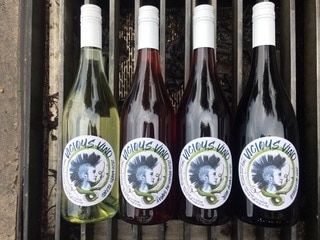
Chaffey Bros. 2020 Pax Æterna Single Vineyard Old Vine Nouveau Grenache – Barossa Valley ($29)
From 87-year-old vines in the north of the Barossa Valley, the grapes were a mix of berries from just-coloured to blue-black, encompassing a range of ripeness levels. Around 30% whole bunches were placed in a bin and then covered with crushed fruit and topped off with dry ice, which then spent around 10 days on skins.
Grenache has a reputation for making high-alcohol wines, and this one (13.8%) is no exception, with a bit of heat on the palate. This wine is very vibrant, ripe and youthful, with red fruits and mint the main aromas and flavours. Despite the use of carbonic maceration, this is not a delicate wine but one that could be really enjoyable with food. Daniel Chaffey related that this is the wine that actually helped them secure a distributor in the UK.
https://chaffeybroswine.com.au/
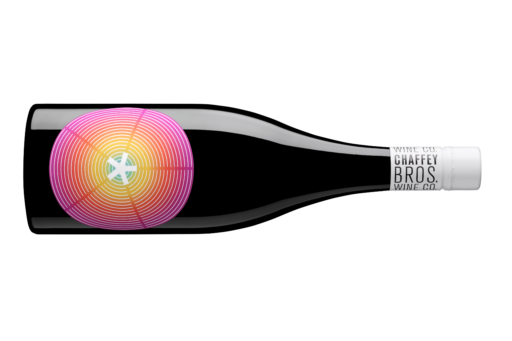
Thousand Candles 2019 Gathering Field Nouveau Red (Pinot Noir, Shiraz & Merlot) – Yarra Valley ($28)
The Thousand Candles vineyard is a beautiful property comprising 110 acres of vines, with a focus mainly on shiraz/syrah and pinot noir. The Nouveau Red comprised 100% whole bunches, left for 7-10 days in sealed fermenters with dry ice, which were stomped by foot, pressed and left to finish the ferment in stainless steel tanks, before blending, and bottling with minimal sulphites.
The Thousand Candles vineyard has a reputation for producing quality fruit and this wine did not disappoint. Upon opening, the predominant aroma is sour cherry, although it soon opens up to very ripe strawberry and raspberry and the typical cab mac aromas of banana and cinnamon. There’s a very silky mouthfeel to the wine and a lot of acid which gives it a great vibrancy and an amazing palate.
https://www.thousandcandles.com.au/
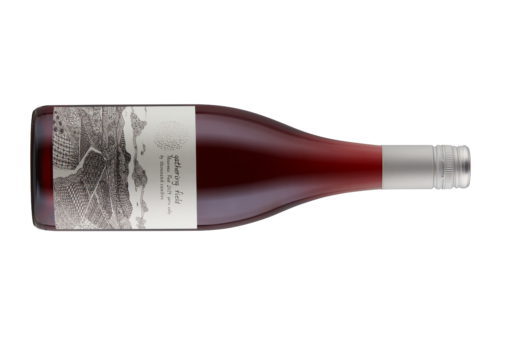
Thanks to my highly scientific (ahem) research study, I discovered some interesting things. As expected, the Beaujolais nouveaux were incredibly fruity and approachable, offering loads of red berries and cab mac characters, making them a delight to drink.
While neither of them (and Beaujolais nouveau in general) has the ethereality, complexity and long-livedness of many wines from the Beaujolais crus such as Morgon or Moulin-à-Vent, it really doesn’t matter, as their sheer focus on pleasure in the present moment is enough to keep you interested – and is one big reason why they’re so popular, especially in France.
What I found interesting was that only one of the Australian wines I sampled – the Vinden – was reminiscent of the look, aroma and taste of Beaujolais nouveau, though with an Australian spin on it. The others used cab mac to varying degrees but the results were quite diverse, highlighting how this process can be used differently – particularly with various grape varieties – to achieve varying outcomes.
While the use of cab mac can result in wines that aren’t suited for cellaring, some of the wines above could still live on; one wine had to be excluded, unfortunately, as it had completely lost its fruit within two years and was undrinkable. So if you find a wine that’s been made with cab mac, it’s best to drink it early, and if you like it, buy some more and see how long you can wait to finish them.

